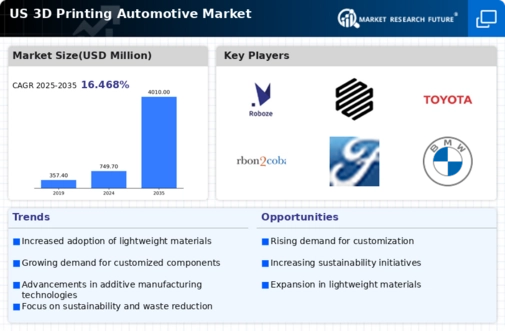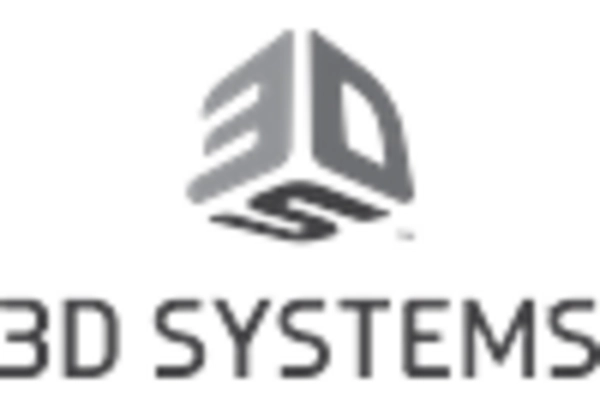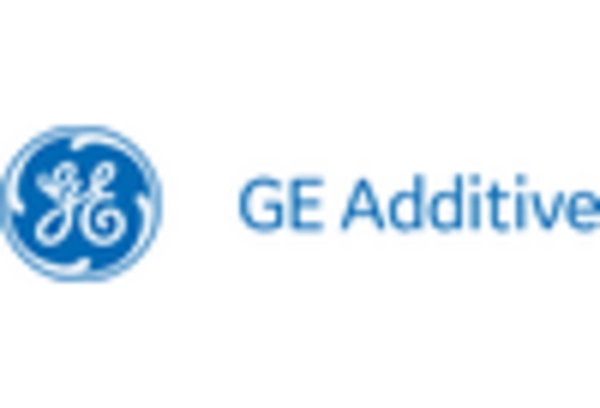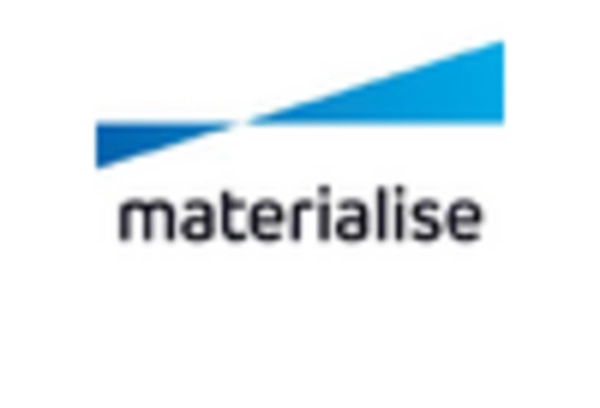Supply Chain Resilience
The 3d printing-automotive market is poised to enhance supply chain resilience, a critical factor in today's manufacturing landscape. Traditional supply chains often face disruptions due to geopolitical issues, natural disasters, or logistical challenges. In contrast, 3d printing allows for localized production, reducing dependency on global supply chains. By enabling manufacturers to produce parts on-demand, 3d printing can mitigate risks associated with inventory shortages and long lead times. Current data suggests that companies utilizing 3d printing can reduce their supply chain costs by approximately 20%. This shift towards localized production not only enhances operational efficiency but also provides a competitive edge in responding to market demands swiftly. Therefore, the focus on supply chain resilience is likely to drive further investment in 3d printing technologies within the automotive industry.
Enhanced Design Flexibility
The 3d printing-automotive market is characterized by enhanced design flexibility, which is reshaping how vehicles are conceptualized and manufactured. Unlike traditional manufacturing methods, 3d printing allows for the creation of intricate designs that were previously deemed impractical or impossible. This flexibility enables automotive designers to explore innovative shapes and functionalities, leading to the development of unique vehicle features. Moreover, the ability to easily modify designs in response to consumer feedback or market trends can significantly shorten the product development cycle. Current trends indicate that companies leveraging this design flexibility can achieve a competitive advantage by offering more customized and appealing products. As such, the emphasis on enhanced design flexibility is likely to be a driving force in the ongoing evolution of the 3d printing-automotive market.
Cost Efficiency in Production
The 3d printing-automotive market is experiencing a notable shift towards cost efficiency in production processes. By utilizing additive manufacturing techniques, automotive manufacturers can significantly reduce material waste, which is often a critical factor in production costs. Reports indicate that companies adopting 3d printing technologies can achieve up to 30% savings in material costs. Furthermore, the ability to produce complex geometries without the need for extensive tooling can lead to reduced labor costs and shorter lead times. This financial advantage is particularly appealing in a competitive market where profit margins are under constant pressure. As a result, the drive for cost efficiency is likely to propel the adoption of 3d printing technologies within the automotive sector, enhancing overall productivity and profitability.
Lightweight Materials Adoption
The trend towards lightweight materials in the automotive industry is significantly influencing the 3d printing-automotive market. As manufacturers strive to improve fuel efficiency and reduce emissions, the use of lightweight components becomes increasingly critical. 3d printing technologies facilitate the production of complex, lightweight structures that traditional manufacturing methods may struggle to achieve. For instance, the integration of advanced polymers and metal alloys in 3d printing can lead to weight reductions of up to 50% in certain components. This capability not only enhances vehicle performance but also aligns with regulatory pressures for lower emissions. As a result, the adoption of lightweight materials through 3d printing is likely to become a key driver in the automotive sector, promoting sustainability and efficiency.
Rapid Prototyping Capabilities
The 3d printing-automotive market benefits significantly from advancements in rapid prototyping capabilities. This technology allows manufacturers to create prototypes in a fraction of the time compared to traditional methods, which can take weeks or even months. Current estimates suggest that 3d printing can reduce prototyping time by as much as 70%. This acceleration in the design phase enables automotive companies to iterate designs quickly, test new concepts, and bring products to market faster. The ability to rapidly prototype not only enhances innovation but also allows for more effective collaboration between design and engineering teams. Consequently, the demand for rapid prototyping solutions is expected to grow, further embedding 3d printing technologies into the automotive development process.

















Leave a Comment